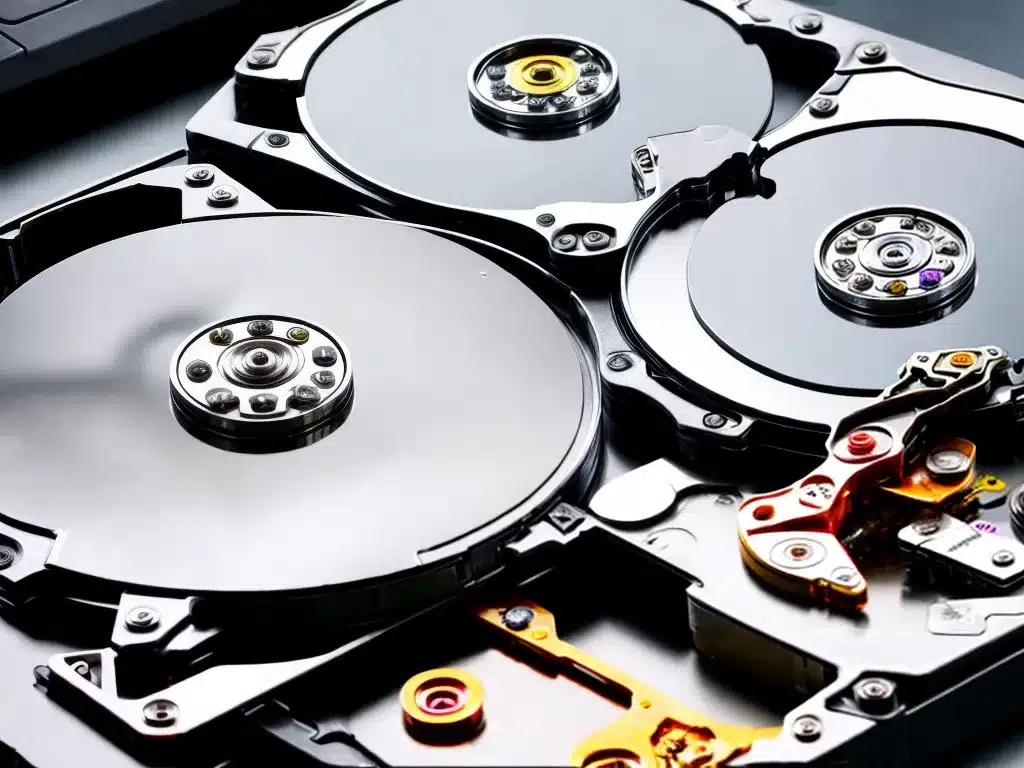
Introduction
Hard drive failure can happen unexpectedly and result in data loss. As someone whose hard drive recently crashed, I wanted to research the options available for recovering my files. In this article, I will provide an in-depth look at the data recovery options from failed hard drives based on my personal experience and research.
Understanding Hard Drive Failure
Hard drives can fail for several reasons, including:
-
Mechanical failure – The mechanical parts inside the hard drive fail, preventing access to data. This includes failure of the read/write heads, motors, etc.
-
Logical failure – The hard drive’s file system or partitioning gets corrupted, making data inaccessible. The data is still physically on the drive but cannot be accessed through normal means.
-
Electronic failure – An electrical component on the hard drive’s circuit board fails. This prevents communication between the drive and computer.
-
Physical damage – External damage to the drive from drops, fire, water exposure, etc. This can damage the internal components.
So in summary, hard drive failure is usually caused by a hardware malfunction or corruption rather than the data itself being wiped out. With the right tools, the data is often recoverable.
DIY Data Recovery Options
When my hard drive failed, I first considered if I could recover the data myself before paying for professional recovery. Here are some DIY options I researched:
Software
-
Data recovery software scans the drive and attempts to rescue files. Popular tools include Recuva, EaseUS Data Recovery Wizard, Stellar Data Recovery, etc.
-
Pros: Inexpensive, easy to use. May recover deleted and lost files.
-
Cons: Limited capability for mechanically failed drives. May recover corrupt files.
DIY Repair
-
I considered opening the hard drive casing and diagnosing/fixing the mechanical failure myself.
-
Pros: Doesn’t require sending drive away. No cost if successful. Educational.
-
Cons: Highly technical. Could damage drive further and lose all data. Requires specialized tools.
Freezer Trick
-
Placing the failed hard drive in a freezer for several hours can potentially allow it to mount temporarily.
-
Pros: Free, non-invasive method. Could provide brief access to recover data.
-
Cons: Usually only works for a short time. Does not fix underlying issue.
In summary, DIY options provide an inexpensive way to try recovering data yourself but have limited effectiveness. Professional help is usually required for hardware failures.
Professional Data Recovery Options
For the best chance of recovering my data, I ultimately had to use a professional data recovery service. Here are the main options I considered:
Local Repair Shop
-
Small computer repair stores sometimes offer hard drive recovery services. I found a few local shops that quoted $100-$300.
-
Pros: More affordable, convenient. Quick turnaround.
-
Cons: Technicians may lack training/experience with severe failures. No guarantees.
Mail-In Data Recovery Services
-
Companies like Ontrack, Gillware, Secure Data Recovery offer mail-in recovery services. They quoted $300-$1000 for my drive.
-
Pros: Specialized engineers. Class 100 cleanrooms. Possible to recover data others can’t.
-
Cons: More expensive. Takes 1-2 weeks to get data back.
In-Lab Recovery
-
I visited a data recovery lab for an in-person evaluation. They attempt recovery on-site while I waited. Quotes ranged from $1200-$2500.
-
Pros: Highest chance of recovery. Immediate results. Can discuss options with engineers.
-
Cons: Most expensive option. Limited locations available.
Overall, mail-in recovery provided the best balance of expertise and affordability for my needs. The cost was worth it to recover years of irreplaceable data from my failed drive.
Choosing the Right Option For You
Here are some tips for picking the best data recovery method based on your situation:
-
Type of failure – Logical failures have higher DIY recovery success. Mechanical/electronic failures often require professional help.
-
Value of data – Weigh the cost of recovery vs. the value of lost data. Key files like photos may be worth more.
-
Time constraints – Mail-in takes 1-2 weeks. In-lab is faster but more expensive.
-
Drive condition – If drive was exposed to physical damage/water, professional recovery is best.
-
Cost – Estimate costs before proceeding. DIY first then escalate to professional help as needed.
Final Thoughts
Recovering data from a failed hard drive can seem daunting but is often possible with the right tools and techniques. Understanding the DIY vs. professional options available will help you choose the best route to rescue your valuable data. Quick action is also important – the sooner you attempt recovery, the higher your chances. With persistence and patience, you can overcome a hard drive failure and regain access to important memories and information. Let me know if you have any other data recovery questions!












